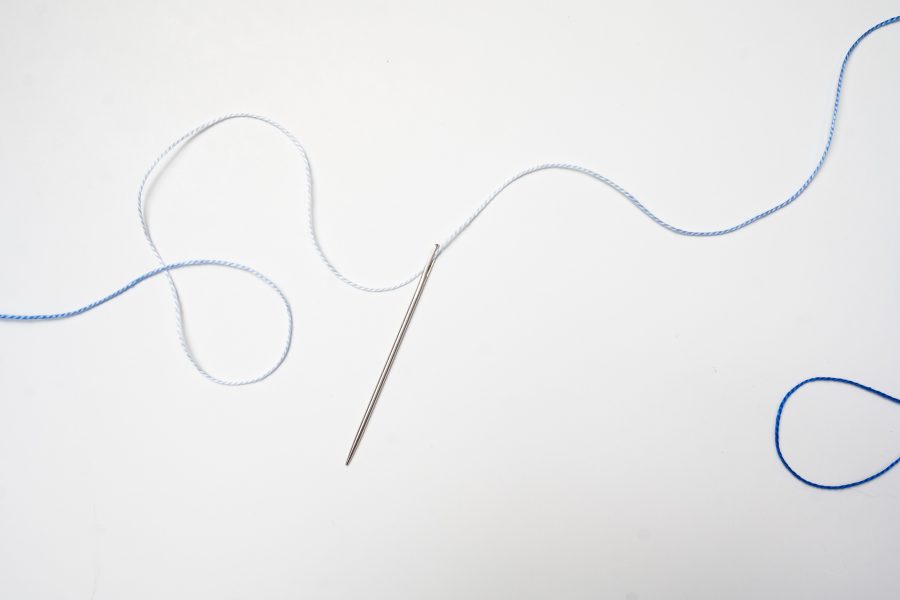(Spoiler: Not necessarily.)

Every now and then, a trend or “hot take” makes its way across the internet— and lately, stainless steel needles have been getting all the buzz. The claim: that stainless steel needles are “better, sharper, stronger, and overall, superior to everything else out there.”
But here’s the truth: when it comes to sewing, quilting, and needlepoint, high-carbon steel needles with nickel plating — like the ones Colonial Needle has imported from England for 100 years — are the superior choice. The main reason for this is that the high carbon content of the steel alloy allows for the needles to be heat treated at incredibly high temperatures to harden them like no other, then tempered to give them the required spring. This is simply not possible with low carbon composition of Stainless Steel.
Let’s take a closer look at why.
The Difference Between High-Carbon Steel and Stainless Steel
| High Carbon Steel Needles (Nickel-Plated) | Stainless Steel Needles | |
| Composition | Iron based alloy with a high carbon content, plated with nickel for corrosion resistance | Iron based alloy high in chromium for corrosion resistance and relatively low carbon content |
| Hardness | Very hard core; can be sharpened to an extremely fine point | Slightly softer but still durable |
| Sharpness Retention | Excellent — maintains a sharp tip for a long time | Good, but tends to dull faster under heavy use due to the softness of stainless steel |
| Corrosion Resistance | Improved by nickel plating, but plating can wear off over time if made poorly | Naturally resistant to rust and corrosion throughout |
| Flexibility | Superior strength resists bending, but may snap if bent excessively | More flexible. Less likely to break, but more likely to remain bent. |
| Surface Finish | Smooth, bright nickel coating; may tarnish over time as coating wears if made poorly | Naturally shiny and maintains luster over time, but often creates more “drag” |
| Cost | Generally lower | Typically higher |
| Best Uses | Ideal for precise needle placement and perfect stitches requiring sharpness | For sewists with a Nickel allergy, and preferred in environments with moisture exposure |
Why High-Carbon Steel Wins
When you pick up a high-quality needle, what matters most is how it feels and performs in your hand. High-carbon steel gives you:
- A sharper, smoother point that glides effortlessly through fabric and fibers.
- Less bending and more precise stitch placement, even with heavier threads or more coarse fabrics.
- Consistent performance, stitch after stitch.
That’s why professional stitchers, quilters, and embroiderers have trusted high-carbon steel needles for generations. They simply work better — and that’s what matters most.
The Finishing Touch: Nickel Plating
Applying nickel plating to our needles gives the needle a mirror-like smoothness that allows it to pass through fabric with ease, and it also adds a layer of protection against rust and corrosion.
So while stainless steel relies on chromium for rust resistance, nickel-plated high-carbon steel needles achieve the same benefit — without sacrificing sharpness, strength, or feel. The only true benefit to using Stainless Steel needles would be if you were allergic to the Nickel plating.
So Don’t Believe Everything You Hear Online
The claim that “stainless steel needles are the best” sounds good in theory — but in practice, it doesn’t hold up. Stainless needles may look shiny and promise rust resistance, but they can’t match the performance of a high-carbon steel needle where it really counts: in sharpness, durability, and smooth stitching.
Our manufacturer in England has been perfecting the craft of needle-making for over 150 years – since 1840! The high-carbon steel, nickel-plated needles from brands like John James, Mary Arden, Colonial Needle, Richard Hemming, Roxanne, and S. Thomas & Sons are designed to give makers the best possible stitching experience — no trends required.
The Bottom Line
If you want a needle that is strong, stays sharp, feels smooth, and lasts through countless projects, choose high-carbon steel with nickel plating. It’s the traditional choice for a reason — and still the best one today.
